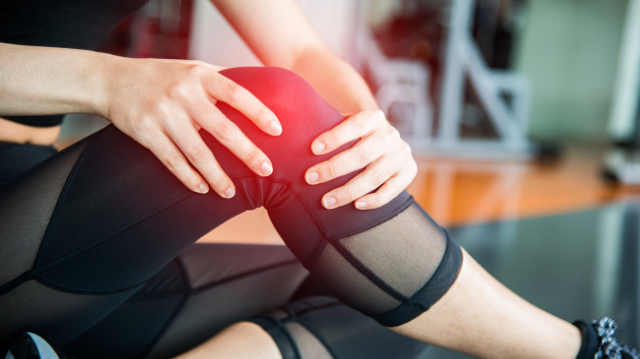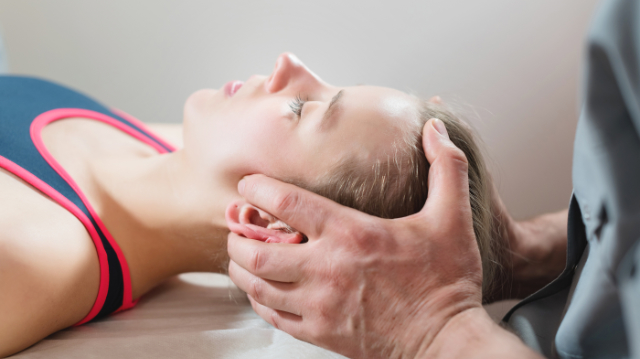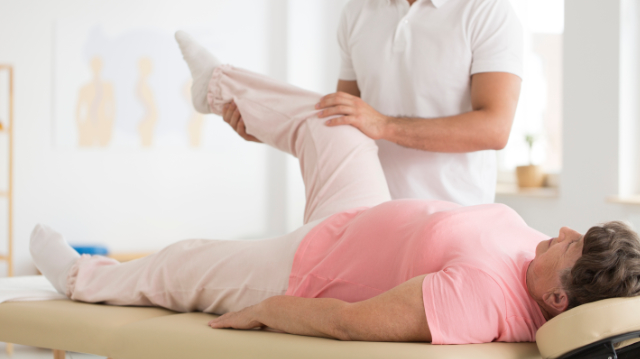
When asked about physical therapists and what types of conditions they treat, most people probably think about ankle sprains, back pain, ACL and meniscus tears, rotator cuff issues, broken bones, and possibly sports injuries overall. While these and other musculoskeletal conditions do account for the majority of physical therapists’ patient load, the range of physical therapy goes far beyond them. Some of the less common conditions physical therapists treat include various pulmonary, cardiovascular, and balance issues, but their role can be just as vital in the management of these patients.
Cardiopulmonary rehab: treatment for pulmonary and/or cardiovascular issues
Any condition involving a problem with the lungs that leads to breathing complications is classified as a pulmonary disorder. The most common of these is chronic obstructive pulmonary disease (COPD), which is the 10th most prevalent disease in the world and expected to become the 5th leading cause of death by 2050. COPD causes the airways of the lungs to become less efficient at moving air and it leads to shortness of breath, coughing and wheezing, excessive mucus, and difficulty taking a deep breath. Chronic bronchitis and emphysema are both types of COPD. Other common pulmonary disorders include asthma, lung cancer, pulmonary fibrosis, and sarcoidosis.
Cardiovascular disorders are defined by a dysfunction of the heart and blood vessels. Heart disease, heart failure, coronary artery disease, hypertension (high blood pressure), hypotension (low blood pressure), and cardiac events like a heart attack are all cardiovascular disorders, which often have serious implications for patients. Some disorders, like pulmonary hypertension (high blood pressure in the blood vessels that lead from the heart to the lungs), involve both the cardiovascular system and the lungs.
Since the heart, lungs, and blood vessels are all closely associated with one another, a specialized form of therapy called cardiopulmonary rehabilitation is recommended as an effective treatment many pulmonary and/or cardiovascular disorders. While a primary care physician and possibly a specialist will serve as the leading provider to guide treatment decisions for these conditions, cardiopulmonary rehabilitation provided by a physical therapist can serve as an important adjunct to help patients become more physically active. Each cardiopulmonary rehabilitation plan is unique, but most will include one or more of the following interventions:
- Breathing retraining, including proper breathing techniques to maximize oxygen intake and consumption Education on the early warning signs of distress
- An appropriate exercise program, including endurance and strength training
- Guidance on how to increase daily physical activity levels
- Medication management guidance
- Instructions on disease pathology, infection control, and energy conservation
Vestibular rehab is strongly recommended for balance disorders
Vertigo is the feeling that things are moving, rotating, rocking, or spinning when a person and their environment are completely still. It occurs when there is a problem with the vestibular system that interferes with communication between the brain and other areas of the body. This communication breakdown leads to perceived motion—the primary symptom of vertigo—as well as other symptoms like dizziness, nausea/vomiting, balance disturbance, and headaches.
Millions of Americans experience vertigo and related symptoms each year, with one study reporting that as many as 35% of adults over the age of 40 have dealt with a vestibular dysfunction at some point in their lives. There are several conditions that can cause vertigo, such as inner ear infections, migraines, stroke, surgery, and head injuries, but the two most common issues are vestibular neuritis and benign paroxysmal vertigo disorder (BPPV).
The good news for patients is that BPPV and other causes of vertigo are very treatable. Physical therapy is regarded as one of the most effective vertigo treatments and it has been proven to significantly reduce symptoms. And best of all, many cases of vertigo can be completely resolved in just a few treatment sessions. The specific treatments used depends on what condition is present, but some of the most common interventions include the following:
- Balance retraining exercises: these types of exercises will have the patient shift their body weight in various directions while standing to improve the way information is sent to the brain
- Gaze stabilization exercises: these are designed to keep vision steady while making rapid side–to–side head turns and focusing on an object, which will help the brain adapt to new signaling from the balance system
- Epley maneuver: an extremely effective technique for cases of BPPV involving the posterior canal of the ear that works by allowing the free–floating crystals to be relocated by gravity back to the utricle; has been found to resolve vertigo in approximately 90–95% of patients
- In another simple maneuver, your physical therapist will guide you through a series of 2–4 positions, each of which should be held for up to two minutes; as with the Epley maneuver, these position changes are designed to move the crystals from the semicircular canals back to the appropriate area of the inner ear
- Balance retraining exercises may be needed for some patients that continue to experience balance issues after the vertigo has subsided
As you can see, physical therapy has many applications beyond what most patients might expect, but it can be doubly effective for those who also have a musculoskeletal disorder. For example, if a patient with pulmonary hypertension has been told to exercise more often but is unable to do so because of knee pain, a physical therapist can help address their knee pain and simultaneously provide exercise recommendations that are considerate of their limitations. It’s a win–win for any patient dealing with these issues, and that’s why we strongly advise you to contact us if you’re being hindered by any pulmonary, cardiovascular, or balance issues.









